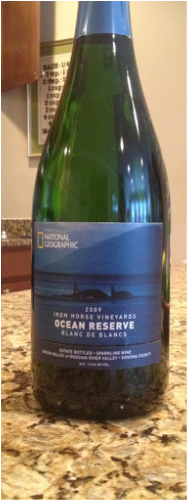The reason you can buy wine for $2 a bottle is that it likely uses inferior fruit- the growers grow as many grapes per vine as they can, meaning the flavors and nutrients in each berry are less concentrated (a poor vine can only spread its nutrients so thin.) These nutrients wind up becoming things like sugar, acid, and flavor and color compounds. So if there are fewer of them, the quality of the juice that goes into making the wine suffers.
Furthermore, these mass-produced wineries don't take very good care of the fruit during/after it is picked. It is often machine harvested by machines that come along and shake the vines until the berries fall off. They don't sort out the twigs, moldy, shriveled, or unripe berries. Often, a mechanical sorter will kind of shake out the worst of the twigs and leaves, but not all. This debris, along with the inferior fruit, all gets made into your wine.
The juice from these berries is often fermented and stored in ENORMOUS tanks. Think this vs this. There is literally almost no way any sort of artistic slant could be put on wines in these tanks. There is therefore likely to be an almost bland consistency with these mass produced wines. They have a chemical formula basically- a ratio of sugar to acid to tannins that they aim for. They test the juice, tinker with it, make additions to get it to the right formula, and bottle it to get it to you. A 2011 will taste the same as a 2012 which will probably taste the same as the same wine made in 2001. They are not going for vintage variability and craft- consistency is all.
While fine, handcrafted wines may be aged in oak barrels (expensive suckers, those oak barrels, especially when you consider they don't hold much compared to those tanks above) these mass produced wines, as the Jezebel author mentioned, probably get their oak flavor from chips or sawdust. They dump a bunch of oak dust in there, wait, strain it out and call it a day.
So these are all quality issues, which honestly, you may not be able to taste when all is said and done (though I argue that in a side-by-side blind comparison, the differences between handcrafted and mass-produced wines are clear) but there are other things at play- like helping the economy of wherever your wine is made. These large wineries charge less because they cut out a LOT of labor. Hire someone to carefully pick only the best grapes? Someone to sort out the bad fruit and the sticks and stuff? No thanks. That's what MACHINES are for. Buy a bottling line that requires humans to run it (something smaller wineries are forced to do as they cannot afford automatic ones)? No thanks. That's why we buy ROBOTS! Pay a highly skilled artisan to make oak barrels (a person known as a cooper, BTW)? Nah. We'll just put sawdust in it.
Everything is automated. From production to quality control. Vine to bottle.
So, what to do? Maybe you don't want to drink a $40 bottle of wine on a Tuesday night with dinner. I get it. I don't either, much of the time. That's ok! There's usually a middle-road. Instead of your drugstore $4 usual offering, why don't you look in the $15-20 range? Sure, you might not be able to crank through a bottle a night, but should you really be doing that anyway? Hmmm? (raises eyebrow...) By the time you hit $15-20, you're able to shop wines from smaller producers, often with a vintage listed on the bottle- and 2010 will mean something. It won't taste like 2008. Likely, it was made in a real barrel, tasted and tinkered with by a real person, the grapevines pruned and picked by real people, bottled by a real person (like me!) and it will probably have more character, nuance, and complexity of flavor than its $4 cousin. Try a side-by-side comparison and see if you don't believe me.
I could keep going on and on, but this post is already onerously long, so I'll refrain. But if you have any questions or comments, let me know!
Cheers (and remember, don't be a cheapskate!)


 RSS Feed
RSS Feed